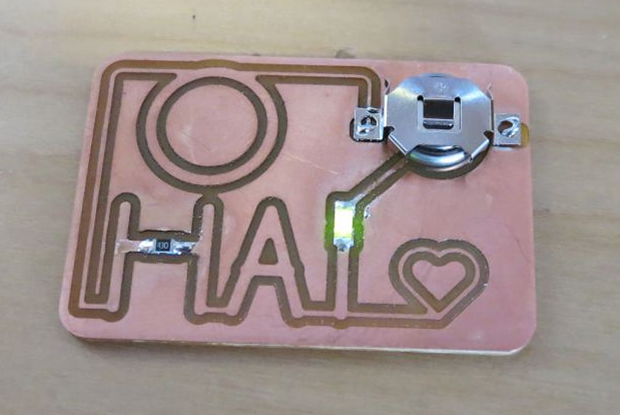Milling PCBs has historically been a bit of a trial, with long wait times and expensive board manufacturers. We here at Other Machine Co. like to think we have solved this prototyping problem by producing the Othermill, a tiny 3-axis mill that fits on a desktop and is perfect for PCB milling (among other things!). It’s easy to use and comes with its own free motion planning software, Otherplan.
Here’s a tiny project for a tiny mill. This project will show you the basics of manipulating a file in Otherplan and cutting it out on an Othermill. The same basic process applies to any other board you might want to make.
The traditional first project for something like this usually contains a phrase like “Hello World.” This one is so small, however, we couldn’t get “Hello World” to fit in the board, so we call this project “O HAI.”
Simone Davalos is the Project and Support Engineer at Other Machine Co. She has a long history of playing with machines for fun and education, and enjoys breaking things in order to learn about them. Contact her at simone@othermachine.co.



